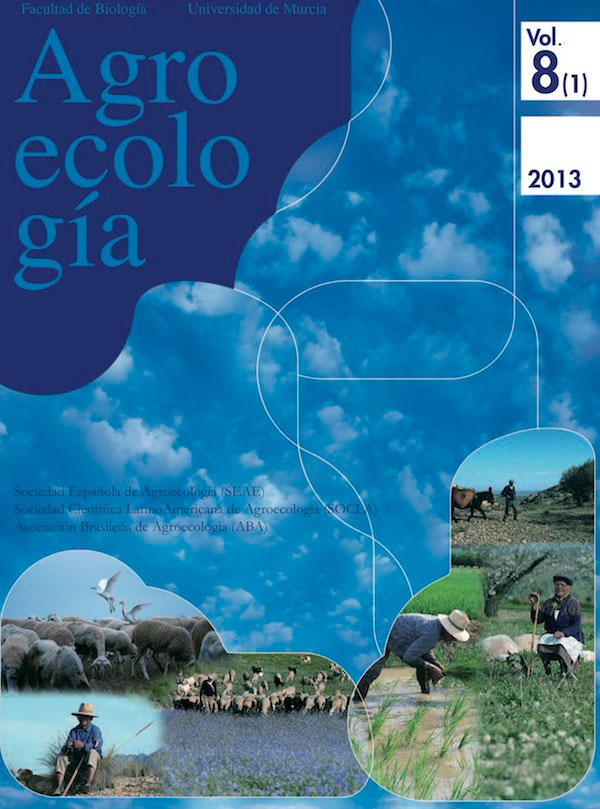White grub incidence, Campesino management systems and climatic variability in Napizaro, Michoacán, México
Abstract
Traditional agriculture continues to be an important practice in Mexico, however it is not homogeneous and presents a great diversity of managements that is reflected on crop yield and biodiversity maintenance. In recent times, due to excessive use of pesticides and the increase in monocultures, pest species have become and important problem. Particularly soil pest are causing annual losses; however evidence to decide which management strategies minimize pest effects upon harvest is lacking. In order to estimate the effect of management type upon white grub abundance, we evaluated three management systems in the community of Napizaro in the Pátzcuaro basin, Mexico. The studied systems were: conventional management, organic fertilization and crop rotation, in four different plots per system. In three consecutive years (2010-2012) during the agricultural cycle between June and December, we sampled white grub abundance once per month and we evaluated crop yield per hectare at the end of the season. Also we measured soil parameters such as pH and percent organic matter per plot. The evaluated plots present a management gradient that is reflected on white grub abundance and on maize yield. Organic fertilized and crop rotation plots presented lower abundances of soil pests in comparison with conventional plots (p<0.05), while crop yield was greater in conventional plots. On the other hand, soil parameters showed that organic fertilization indeed increased % soil organic matter and soil pH reached more adequate levels in crop rotation plots. White grub abundance was not related with crop yield, therefore we suggest further investigation into the direct effect of these insects upon maize plants. Organic fertilized and crop rotation plots where resilient to drought effects, particularly regarding white grub abundance.Downloads
Las obras que se publican en esta revista están sujetas a los siguientes términos:
1. El Servicio de Publicaciones de la Universidad de Murcia (la editorial) conserva los derechos patrimoniales (copyright) de las obras publicadas, y favorece y permite la reutilización de las mismas bajo la licencia de uso indicada en el punto 2.
2. Las obras se publican en la edición electrónica de la revista bajo una licencia Creative Commons Reconocimiento-NoComercial-SinObraDerivada 3.0 España (texto legal). Se pueden copiar, usar, difundir, transmitir y exponer públicamente, siempre que: i) se cite la autoría y la fuente original de su publicación (revista, editorial y URL de la obra); ii) no se usen para fines comerciales; iii) se mencione la existencia y especificaciones de esta licencia de uso.
3. Condiciones de auto-archivo. Se permite y se anima a los autores a difundir electrónicamente las versiones pre-print (versión antes de ser evaluada) y/o post-print (versión evaluada y aceptada para su publicación) de sus obras antes de su publicación, ya que favorece su circulación y difusión más temprana y con ello un posible aumento en su citación y alcance entre la comunidad académica. Color RoMEO: verde.





